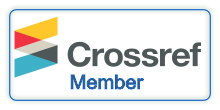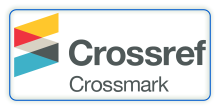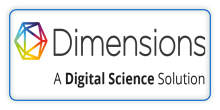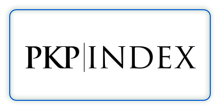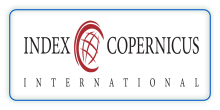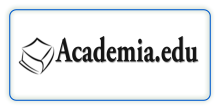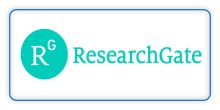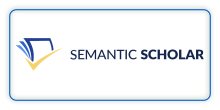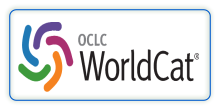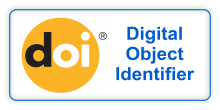A ENRICHMENT FACTORS FOR CADMIUM AND LEAD IN SEDIMENT OF GEMBONG ESTUARY, BEKASI, INDONESIA
DOI:
https://doi.org/10.29121/ijoest.v5.i2.2021.157Keywords:
Heavy Metal, Cadmium, Lead, Enrichment Factor, Quality StandardsAbstract
The enrichment factors of Cd and Pb were determined in Gembong estuary as the biggest estuary in and polluted in Indonesia. Heavy metals over a period of time sooner or later will cause damage to aquatic ecosystems. Cd (cadmium) and Pb (lead) are non-essential metals. Various human activities both industrial and domestic around Gembong estuary waters have the potential to degrade the quality of the water. The purpose of this study is to analyze the content and enrichment factors of Cd and Pb in sediment. The study was conducted in October 2019 at the high tide and low tide. The method used was quantitative. Heavy metal analysis using the Atomic Absorption Spectrophotometer (AAS AA-7000). The result showed that the concentrations of heavy metals contained in the sediment at the high tide were Cd (0.345-1.261 µg/g) and Pb (13.200-47.600 µg/g) and at low tide were Cd (0.017-1.261 µg/g) Pb (15.600-45.240 µg/g). Based on IADC/CEDA quality standard criteria (1997). The standard quality criteria for Cd (0.8 µg/g) means that the concentration of Cd at high tide and low tide have exceeded the quality standard. Meanwhile, for Pb (85 µg/g), the concentration of Pb at high tide and low tide was still below the target level of quality standards. The enrichment factor values for Cd at the high tide and low tide fall into the moderate-very high enrichment category. The enrichment factor values for Pb at the high and low tide was in the moderate-high enrichment category
Downloads
References
Abrahim, G.M.S., and R.J. Parker. 2008. Assessment of Heavy Metal Enrichment Factors and The Degree of Contamination in Marine Sediments from Tamaki Estuary, Auckland, New Zealand. Environ Monit Assess, 136: 227-238.
Aliyanta, B., A. Khairina, A. Kartikasari, and A.A. Lubis. 2018. Estimation of The Rate of Sediment Deposition in Estuary of Gembong Citarum River. A Scientific Journal for The Applications of Isotopes and Radiation, 14 (1): 11-20.
Alviandini, N.B., Muslim., W.R. Prihatiningsih and S.Y. Wulandari. 2019. NORM Activity on Sediment Basement in the Waters of PLTU Tanjung Jati Jepara Water and Its Relation to Sediment Grain Size and TOC. Eksplorium, 40(2):115-126.
Ambinari, M.D., D. Darusman,H.S. Alikodra and N. Santoso. 2016. Reforming the Role of the Parties in Urban Mangrove Forest Managements (Case Study on Mangrove Forest Management in Jakarta Bay). Jurnal Analisis Kebijakan, 13 (1): 29-40.
Aprile, F.M., and Bouvy, M. 2008. Distribution and Enrichment of Heavy Metals in Sediments at The Tapacura River Basin, Northeastern Brazil. Braz. J. Aquat. Sci. Technol, 12(1):1-8.
Arief, H.R., Masyamsir., and Y. Dhahiyat. 2012. Distribution of Heavy Metals Content Pb and Cd in Water Column and Sediment of Upper Citarum River Sediments. Jurnal Perikanan dan Kelautan, 3(3):175-182.
Birry, A.S. and H. Meutia. 2012. Out of Control Toxic Substances, A Portrait of Hazardous and Toxic Chemical Pollution in River Bodies and Some Unmanned Industrial Disposal Points, Citarum Case Study. Greenpeace Indonesia, Jawa Barat. (Indonesian).
Habibi, M., W.W. Lamawuran, and W.A. Rina. 2014. Citarum River Pollution Case Study. [Paper]. Program Pasca Sarjana Fakultas Kesehatan Masyarakat Universitas Airlangga.
IADC/CEDA Staff. 1997. Environmental Aspects of Dredging: 2a. Convention, Codes, and Conditions: Marine Disposal. Netherlands: International Association of Dredging Companies.
Kamau, J.N. 2002. Heavy metal distribution and enrichment at Port-Reitz Creek, Mombasa. Western Indian Ocean Journal of Marine Science 1, 65-70.
Krauskopf, K.B., and Bird D.K. 1967. Intoduction to Geochemistry. New York: McGraw Hill Book Co.
Lo, C.K. and Y.S. Fung. 1992. Heavy Metal Pollution Profiles of Dated Sediment Cores From Hebe Haven, Hong Kong. Water Research, 26 (12): 1605-1619.
Muslim., H. Suseno and M.J. Pratiwi. 2017b. Behavior of 137Cs Activity in the Sayung Waters, Demak, Indonesia. Atom Indonesia, 43 (1): 41 – 46.
Muslim., and G. Jones. 2003. The Seasonal variation of dissolved nutrients, chlorophyll a and suspended sediments at Nelly Bay, Magnetic Island. Estuarine, Coastal and Shelf Science, 57(3):445-455.
Muslim., W.R. Prihatiningsih and R.A. Arjana. 2016. Activity 137Cs and Total Organic Carbon in Sediments around Tikus Island Indian Ocean. J. Kes Rad & Ling, 1 (1): 6-10.
Permata, M.A.D., A.I.S. Purwiyanto. and G. Diansyah. 2018. Concentration of Heavy Metal Cu (Copper) And Pb (Lead) in The Water and Sediments of Industrial Area, Lampung Bay, Lampung Province. Journal of Tropical Marine Science, 1 (1): 7-14.
Putra, R.D and T. Apriadi. 2018. Study of Heavy Metal Contamination (Pb and Cr) Post Mining Bauxite as Potential of Aquaculture.
Rumahlatu, D. 2011. Concentration Cadmium in Water, Sediment and Deadema setosum (Echinodermata, Echinoidea) in Waters of Ambon Island. Ilmu Kelautan, 16 (2): 78-85.
I.A. Sinex and G.R. Helz. 1981. Regional Geochemistry of Trace Elements in Chesapeake Bay Sediments. Environmental Geology, 3(6): 315-323.
USEPA (National Sediment Quality Survey). 2004. The Incidence and Severity of Sediment Contamination in Surface Waters of United States, National Sediment Quality Survey: 2nd Edition. EPA-823-R-04-2007. U. S. Environmental Protection Agency, Washington D.C.
Usese, A., O.L. Chukwu., M.M. Rahman., R. Naidu., S. Islam and E.O.Oyewo. 2017. Enrichment, contamination and geo-accumulation factors for assessing arsenic contamination in sediment of a Tropical Open Lagoon, Southwest Nigeria. Environmental Technology & Innovation, 8: 126-131.
Yeats, P.A. and J.M. Bewers. 1982. Discharge of metals from the St. Lawrence River. Canadian Journal of Earth Sciences, 19 (5): 982-992.












